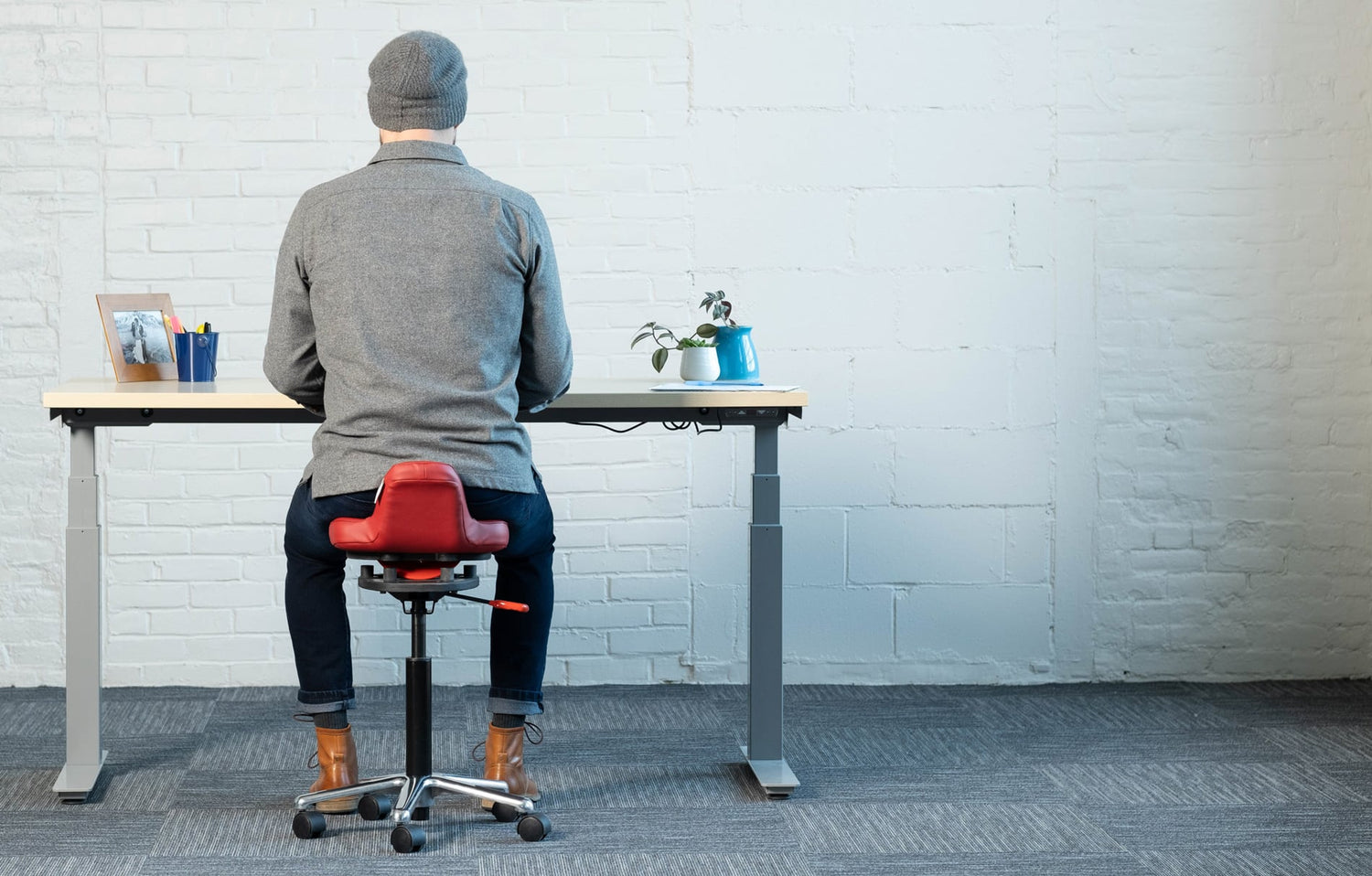Active sitting, mechanically assisted Sitting, and beyond
I was reminded of a delightful video clip recently by a morning eNewsLetter (The Hustle). If you haven’t seen The Hawaii Chair in action, you may enjoy this two-minute demonstration of a technology that was ahead of its time when it was introduced 20 years ago, and likely always will be:

The idea was that by motorizing the seat pan of their chair people would be compelled to move more while sitting. Unfortunately, while this chair does provoke people to move a lot, they were mostly moving in a desperate attempt not to fall off of the chair. Not surprisingly, this proved too distracting to be practical in a work environment, and the Hawaii Chair is now remembered by ChatGPT “… for its entertaining and unusual approach to fitness rather than its practicality or effectiveness. Its place in the history of fitness equipment is marked by its unique blend of cultural inspiration, humorous marketing, and the infomercial phenomenon.”
But the idea of mechanically assisting sitting doesn’t have to be silly. Better sensors, software, and brushless motors have allowed the creation of more nuanced movement. For example, here’s an offering from a startup (movably.com) that encourages frequently changing positions between sitting, standing, and leaning, and introduces the “flamingo” position, an unusual one-legged hybrid of sitting and standing.
It’s still early days for mechanically assisted movement while sitting. Movably’s chair is available, but so far only on Indigogo. But the tech involved in making the interface between humans and their environment seamless and intuitive is rapidly evolving, so it’s likely that we will see more chairs that actively cater to our postural needs.
Chairs that encourage spontaneous movement rather than actively assisting movement are a simpler technology to implement, but still not easy to get right. A chair needs to be tippy enough that it requires continuous rebalancing to stay seated, and yet not so tippy that staying seated is so difficult that it becomes distracting. This requires a delicately balanced mechanism, but one that is robust enough that it can stand up to “exercise equipment” levels of use that kids and some adults enjoy.
There are two basic approaches to balanced sitting: the balance point can be either on the ground (“seat on a pole”) or it can be placed directly under the seat pan of the chair (“wobble seat”). The “seat on a pole” design is actually quite old, going back to when this approach was known as a “shooting stick” in Great Britain1. Because silly seems to be always in fashion, one iteration of this design even incorporated an umbrella.

The seat on a pole design eventually migrated indoors, a trip that required that the pointed base which worked fine in the dirt out of doors be replaced with a massive base more appropriate for indoor flooring.

This design became popular in dentists’ offices in the late 1800s because it allowed dentists to move freely from their instrument tray to their patient’s mouth without getting up from their seat, an important consideration before the advent of dental assistants. This basic seat geometry got a new lease on life in 1994 when it was adopted by Henner Jahns for his Swopper stool. Henner was a design student in Germany2 and little imagined just how successful his student design project would turn out to be: the Swopper is still in production 30 years later with hundreds of thousands of Swoppers sold around the world.
This basic “seat on a pole” design has also been adapted for use in schools, but rather than a heavy base upon which the seat post tilts, the entire base is enlarged and given a rounded underside, resulting in a “wobble stool”3. This design that lends itself to inexpensive mass production when made from plastic, so a natural for use in schools. Because plastic is, well, plastic, such stools now come in a variety of shapes:


Putting the point of instability immediately under the seat pan of a chair came later in the evolution of active sitting. The earliest incarnation was due to Dr. Pettibon (1991)4 and was really designed to be a therapeutic tool in a chiropractor’s office rather than a chair per se. The idea was that patients would do supervised exercises on this chair to align their posture.

4Therapeutic Chair – Patent No. US6481795B1
But the idea of a wobble seat soon escaped from the chiropractic office, and other, more-chair-like, incarnations of “wobble chair” soon appeared which also incorporated mechanisms immediately below the seat pan to provide for movement. Some of these mechanisms had rather complex designs:5

while others were simpler:6

This last, simplest, rocker is one that we developed here at QOR360, and the one that we’ve adopted, because it’s lightweight, indestructible, and inexpensive to produce. This last point is important because controlling the cost of components helps keep active sitting affordable. We’re always experimenting with new designs, of course, but this odd shape seems to be the sweet spot, at least so far. Designs, by design, are always evolving, and it’s unlikely that we’ve seen the final word in active sitting. Indeed, because people are so different one from another, we are unlikely to ever see any single design that works for everyone. Rather, expect a plethora of options to choose from. Which is great news, because it’s likely there’s an active sitting design that will work for you.





Leave a comment
All comments are moderated before being published.
This site is protected by hCaptcha and the hCaptcha Privacy Policy and Terms of Service apply.